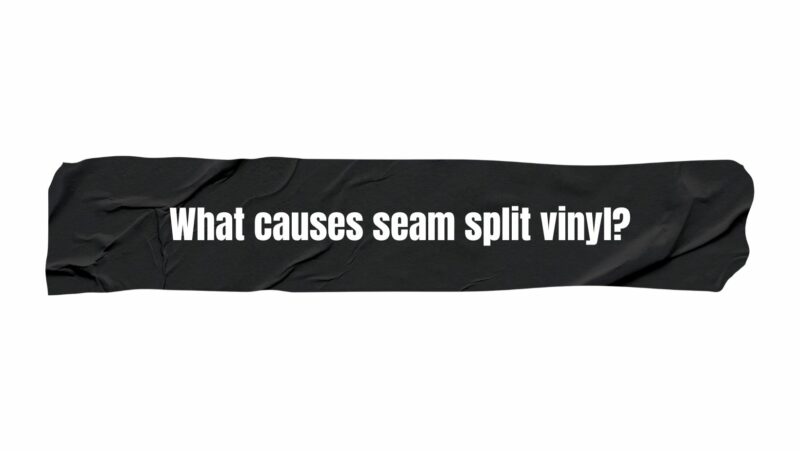Vinyl records have staged a remarkable resurgence in recent years, captivating music enthusiasts with their warm analog sound and nostalgic appeal. However, vinyl enthusiasts often encounter a vexing issue known as “seam split,” wherein the seams of vinyl record sleeves split or separate. This phenomenon can mar the aesthetic value of vinyl records and potentially compromise their protection. This article delves into the various factors that contribute to seam split in vinyl records, shedding light on the importance of proper handling, storage, and manufacturing practices.
The Anatomy of Vinyl Records: To understand seam split, one must first grasp the structure of a vinyl record. A typical vinyl record consists of two main components: the disc itself, made of vinyl compound, and the sleeve, usually crafted from cardboard or other paper-based materials. The sleeve plays a crucial role in safeguarding the vinyl disc from dust, moisture, and physical damage.
Factors Contributing to Seam Split:
- Material Quality and Manufacturing: One primary cause of seam split can be attributed to the quality of materials used in manufacturing both the vinyl record sleeves and the adhesive used for bonding. If subpar materials are utilized, the sleeves might be more prone to wear and tear, making them susceptible to seam split over time.
- Pressure and Stress: The pressure and stress exerted on record sleeves during their lifespan can lead to seam split. Handling records roughly or stacking them without proper support can place undue pressure on the seams, causing them to weaken and ultimately split.
- Temperature and Humidity Fluctuations: Vinyl records are sensitive to environmental conditions, particularly temperature and humidity. Extreme fluctuations in these factors can cause the record sleeve to expand and contract, thereby straining the seams and leading to splitting over time.
- Storage Methods: Inadequate storage practices can also contribute to seam split. Storing records in tight spaces, overcrowded shelves, or improperly fitting sleeves can lead to friction and abrasion along the seams, eventually resulting in splits.
- Handling and Insertion: Incorrect handling and insertion of records into sleeves can cause seam split. Forcing a record into a sleeve or mishandling it during removal can create stress points along the seams, increasing the likelihood of splits.
- Aging and Deterioration: Over time, materials used in vinyl record sleeves can naturally deteriorate, losing their elasticity and strength. As materials degrade, seams become more vulnerable to splitting even with minimal stress.
- Shrink Wrap and Packaging: Records that are shrink-wrapped or packaged too tightly can experience seam split due to the pressure exerted by the wrapping material. This is particularly relevant in cases where the shrink wrap shrinks further after initial packaging.
Prevention and Maintenance:
- Quality Storage: Proper storage is paramount to preventing seam split. Records should be stored vertically on sturdy shelves with ample spacing to avoid pressure on the sleeves. The use of archival-quality polyethylene sleeves within the cardboard sleeves can provide an additional layer of protection.
- Handling Techniques: Gentle and careful handling of vinyl records is essential. Records should be removed and inserted into sleeves with care, minimizing stress on the seams.
- Environmental Control: Maintaining a stable environment is crucial to preserving vinyl records. Avoid storing records in areas prone to extreme temperature and humidity fluctuations.
- Sleeve Replacement: As record sleeves age, consider replacing them with high-quality, acid-free sleeves to prolong the life of the vinyl and protect against seam split.
- Awareness during Manufacturing: Vinyl record manufacturers should prioritize using high-quality materials for both the sleeves and adhesives, ensuring that the finished product can withstand the stresses of regular use.
Conclusion: Seam split in vinyl records is a phenomenon that can detract from the overall enjoyment and preservation of these cherished audio artifacts. By understanding the factors that contribute to seam split, enthusiasts and collectors can adopt preventative measures to ensure the longevity and integrity of their vinyl collections. From proper storage and handling techniques to improved manufacturing practices, a concerted effort can be made to mitigate the occurrence of seam split and safeguard the allure of vinyl records for generations to come.


